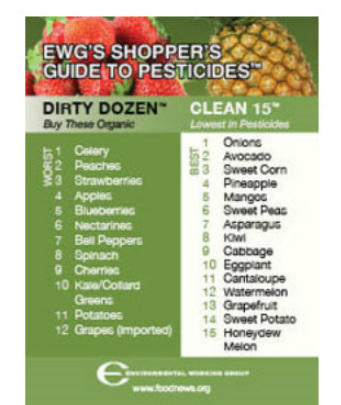
Start by buying organic seeds or plants if possible. If you haven't had your soil tested for pesticides or other toxins (like lead), use pots or containers filled with certified organic soil, and use organic fertilizers. Place sand around plants like basil or tomatoes that are prone to "damping off" caused by fungi and net vulnerable veggies and berries to keep critters and insects away, to avoid the need for pesticides. Garden's Alive is a great resource for organic gardening products and information about organic pest-control.
We've written before about the value of organic foods for our bodies and for our environment. As you know, Cakes opts to use organic ingredients whenever possible, but we also know it can be expensive for many households to make a complete switch to organic. So, whether you are growing your own, or shopping at farmer's markets or grocery stores, you can start by choosing organic options to replace "Dirty Dozen" foods listed in the graphic above and stock up on the "Clean 15". Consider switching to organic versions of pesticide-heavy crops like corn, soy, canola (including oils and shortening), peanuts (& peanut butter), chocolate, and coffee. And be mindful of where your meats, fish, poultry and dairy products come from, so you can choose the healthiest options available within your budget.
It's important to know about the foods you eat, and we know that information can sometimes be confusing or overwhelming--so use your best judgement and take baby steps! Here are links to some articles about avoiding pesticides, a Reader's Digest slideshow about what foods to"always buy organic", and a Washington Post article comparing organic and conventional foods of all sorts. We hope they help you make your own informed decisions.


 RSS Feed
RSS Feed